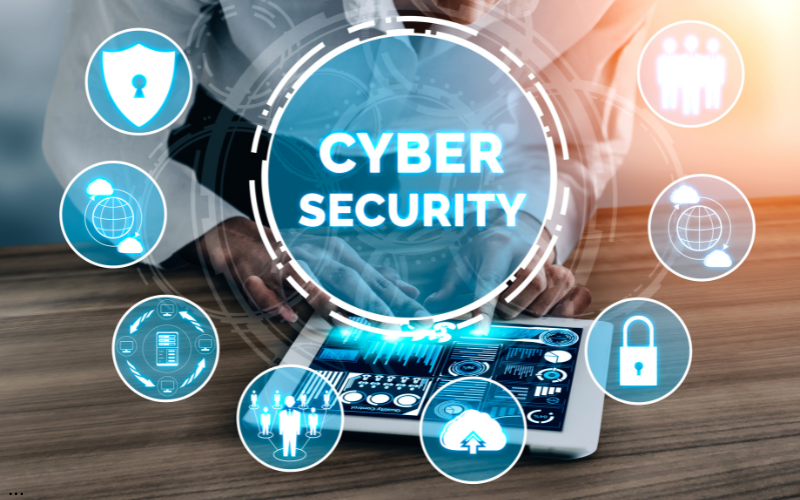
Introduction
In today’s digital landscape, cybersecurity best practices for businesses are more critical than ever. With cyber threats constantly evolving, it’s essential for businesses to stay ahead by implementing effective security measures. This blog post provides a comprehensive guide to understanding network security, identifying common threats, and adopting security practices to protect your business from potential attacks. Stay informed and secure by following these essential tips.
Table of Contents
Understanding Cybersecurity
“In today’s digital age, understanding cybersecurity is crucial for businesses of all sizes. Cybersecurity refers to the practices and technologies used to protect networks, devices, programs, and sensitive information from unauthorized access, attacks, or damage. As cyber threats become increasingly sophisticated, implementing robust cybersecurity measures is essential to safeguarding sensitive information and maintaining trust with customers and partners. Adopting cybersecurity best practices for businesses ensures that companies stay ahead of potential threats and create a secure digital environment for their operations.”
Types of Cybersecurity Threats Businesses Face
Phishing
Phishing attacks involve fraudulent attempts to obtain sensitive information, such as usernames, passwords, and credit card details, by disguising themselves as trustworthy entities in electronic communications. These attacks often come in the form of deceptive emails or messages, tricking recipients into revealing personal information.

Malware
Malware, or malicious software, is designed to damage or disrupt computer systems. This can encompass malware types such as viruses, worms, trojans, and spyware. Malware can infiltrate a business’s systems through various means, including email attachments, software downloads, and malicious websites.

Ransomware
Ransomware is a type of malware that encrypts a victim’s data and demands a ransom payment to restore access. This can be particularly devastating for businesses, leading to significant financial losses and operational disruptions.
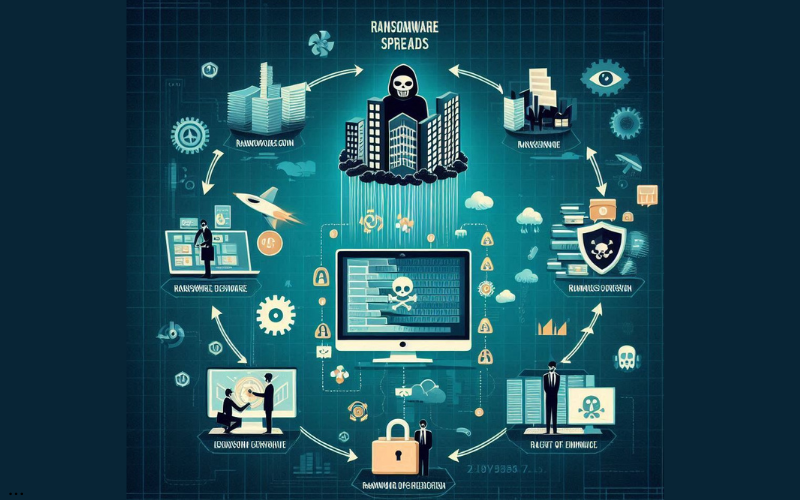
Insider Threats
Insider threats involve employees or other trusted individuals who misuse their access to harm the organization. This can include stealing sensitive information, sabotaging systems, or leaking confidential data.

Distributed Denial of Service (DDoS) attacks
DDoS attacks overwhelm a network, service, or website with a flood of internet traffic, rendering it unavailable to users. These attacks can disrupt business operations and result in significant downtime.
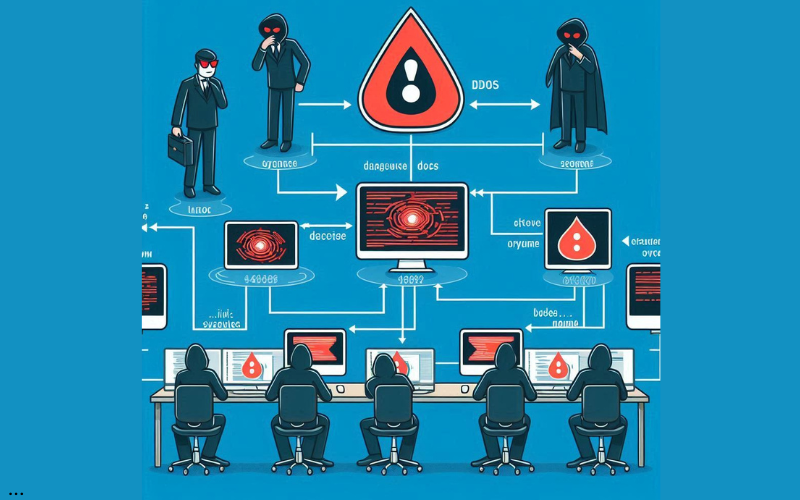
Man-in-the-Middle (MitM) Attacks
MitM attacks occur when an attacker intercepts and alters communication between two parties without their knowledge. This can result in the theft of sensitive information and data breaches.
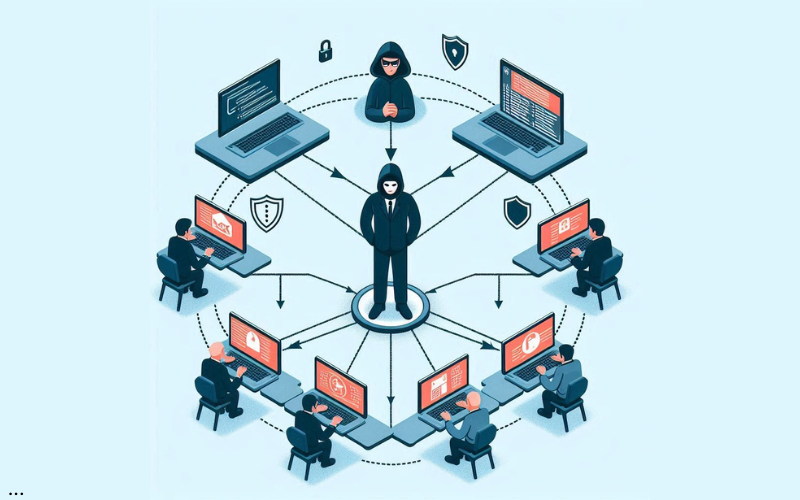
Advanced Persistent Threats (APTs)
apts are extended and focused cyber intrusions where an attacker infiltrates a network and stays concealed for a long duration. These attacks are often orchestrated by well-funded and skilled threat actors, aiming to steal data or cause disruption.
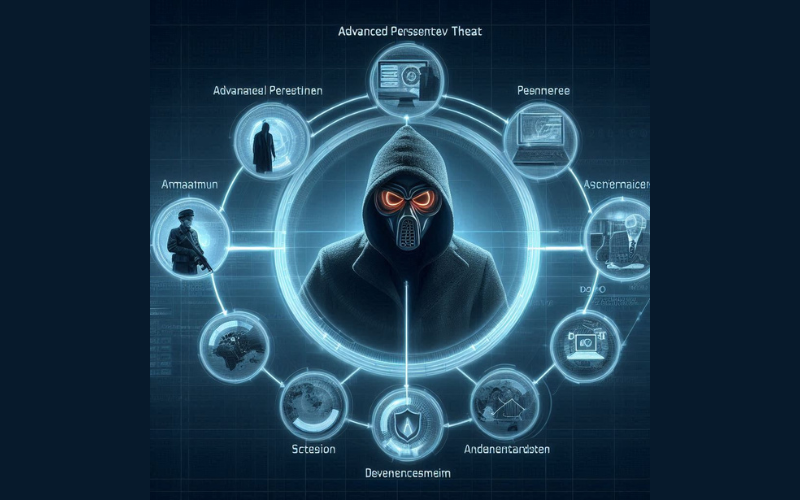
SQL Injection
SQL injection attacks involve inserting malicious SQL code into a query to manipulate a database. This can allow attackers to access, modify, or delete data stored in a database, posing a significant risk to business data integrity.
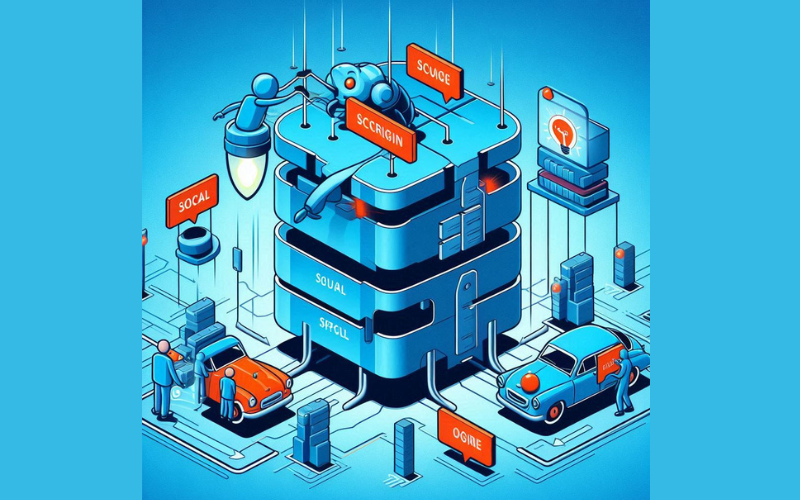
Zero-Day Exploits:
These attacks exploit software vulnerabilities that the vendor is not yet aware of. Because these vulnerabilities are unpatched, they pose a high risk until a fix is released and implemented. Following cybersecurity best practices for businesses can help mitigate these risks by ensuring timely updates and patches, regular system monitoring, and proactive threat management.
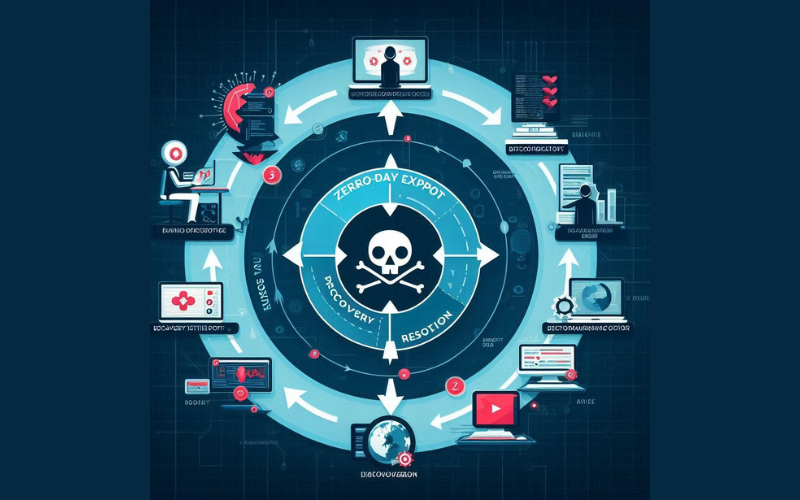
Impact of Cybersecurity Breaches on Businesses
Cybersecurity breaches can wreak havoc on businesses, leading to severe repercussions such as:
- Financial Losses: direct costs such as ransom payments, legal fees, and fines, as well as indirect costs like lost business and reputational damage.
- Operational Disruptions: Downtime caused by cyberattacks can halt business operations, affecting productivity and revenue.
- Data Loss: Breaches can result in the loss or theft of sensitive business and customer information, leading to identity theft and fraud.
- Reputational Damage: Loss of customer trust and confidence can have long-term effects on a business’s reputation and customer loyalty.
Top Cybersecurity Best Practices for Businesses
Implementing effective cybersecurity measures is vital for protecting your business from cyber threats. Here are the top cybersecurity best practices for businesses to ensure your organization remains secure.
1. Employee Training and Awareness
Employee Training and Awareness: Staff members frequently serve as the initial barrier against cyber threats. Regular training and awareness programs are crucial to educating staff about the latest threats and how to avoid them. Security awareness training for employees ensures that employees are well-informed and vigilant, significantly enhancing the overall security posture of any organization.
- Importance of Regular Training: Continuous education helps employees stay updated on the latest cybersecurity trends and threats.
- Best Practices for Training Programs: Use a combination of workshops, online courses, and regular updates to keep training effective.
- Tips for Fostering a Security-First Culture: Encourage reporting of suspicious activities and make cybersecurity a shared responsibility.
2. Implementing Strong Password Policies
Strong passwords are a fundamental aspect of cybersecurity. Weak passwords can easily be exploited by attackers. IT security best practices suggest guidelines for creating strong passwords, using password managers, and implementing multi-factor authentication (MFA).
- Guidelines for Creating Strong Passwords: Use a mix of letters, numbers, and special characters. Avoid common words and phrases.
- Importance of Password Managers: Password managers help create and store complex passwords securely.
- Multi-Factor Authentication (MFA): Enhancing security by implementing additional verification steps.
3. Regular software updates and patching
Regularly updating your software is crucial for safeguarding against known security weaknesses. Adhering to network security guidelines ensures your systems are protected from vulnerabilities and cyber threats.
- Importance of Keeping Software Up to Date: Regular updates patch security flaws and improve system performance.
- Automating Updates: Use automated systems to ensure updates are applied promptly.
- Addressing Vulnerabilities: Regularly review and patch any discovered vulnerabilities.
4. Secure Network Infrastructure
A secure network is crucial to protecting your business from cyber threats.
- Setting Up Firewalls: Firewalls act as a barrier between your internal network and external threats.
- Using VPNs for Remote Work: VPNs encrypt internet connections, ensuring secure remote access.
- Securing Wi-Fi Networks: Use strong encryption (e.g., WPA3) and regularly change Wi-Fi passwords.
5. Data encryption
Securing sensitive data through encryption guarantees that, even if it is intercepted, it remains unreadable without the corresponding decryption key. Implementing cybersecurity best practices for businesses ensures effective encryption and adds an extra layer of data protection.
- Importance of Encrypting Sensitive Data: Protects data from unauthorized access and breaches.
- Encryption Tools and Technologies: Use tools like SSL/TLS for web data and full-disk encryption for storage.
- Best Practices for Data Encryption: Regularly update encryption keys and use strong encryption algorithms.
6. Regular Data Backups
Regular data backups are essential to recover from data loss incidents, such as ransomware attacks.
- Importance of Data Backups: Ensure data can be restored in case of an attack or hardware failure.
- Strategies for Regular Backups: Implement automated backup solutions and follow the 3-2-1 backup rule (three copies of data, two different storage media, one off-site).
- Off-site and Cloud Storage Solutions: Use off-site storage or cloud services to protect backups from local incidents.
7. Access Control Measures
Implementing strict access control measures helps limit exposure to cyber threats.
- Role-Based Access Control (RBAC): Assign access based on job roles to minimize unnecessary permissions.
- Least Privilege Principle: Give users the minimum level of access necessary for their job.
- Monitoring and Managing Access Rights: Regularly review access rights and adjust as necessary.
8. Incident Response Planning
Having a plan in place for responding to cybersecurity incidents can minimize damage and speed up recovery.
- Creating an Incident Response Plan: Define clear steps to take during a cyber incident, including communication protocols and roles.
- Steps to Take During a Cybersecurity Incident: Identify, contain, eradicate, and recover from the incident.
- Post-Incident Review and Improvements: Analyze what happened and update security measures to prevent future incidents.
9. Utilizing Cybersecurity Tools and Technologies
Leverage the latest cybersecurity tools to protect your business from threats.
- Overview of Essential Cybersecurity Tools: Include antivirus software, firewalls, and intrusion detection systems (IDS).
- Antivirus and Anti-Malware Software: Regularly update and run scans to detect and remove threats.
- Intrusion Detection Systems (IDS): Monitor network traffic for signs of malicious activity.
10. Compliance and Legal Considerations
Understanding and adhering to relevant regulations is crucial for legal protection and maintaining customer trust.
- Understanding Relevant Regulations (GDPR, CCPA, etc.): Ensure your business complies with laws regarding data protection and privacy.
- Best Practices for Compliance: Implement policies and procedures to meet regulatory requirements.
- Consequences of Non-Compliance: Highlight potential legal and financial repercussions.
Emerging Trends in Cybersecurity
With advancing technology, cybercriminals continually innovate their methods and tools. Staying updated on emerging trends in cybersecurity is essential for businesses to protect themselves effectively. Here are some of the most significant trends in cybersecurity that businesses should be aware of. Implementing these Cybersecurity Best Practices for Businesses will help ensure robust protection against evolving threats.
- The Role of Artificial Intelligence and Machine Learning in Enhancing Cybersecurity
Artificial intelligence (AI) and machine learning (ML) are transforming cybersecurity, offering sophisticated tools for threat detection and prevention.
- Enhanced Threat Detection: AI and ML algorithms can analyze vast amounts of data to identify patterns and anomalies that may indicate a cyber threat. These technologies can detect threats faster and more accurately than traditional methods.
- Automated Response: AI can automate responses to certain types of cyberattacks, reducing the time it takes to mitigate threats and minimizing potential damage.
- Predictive Analysis: Machine learning models can predict potential future threats based on historical data, allowing businesses to proactively strengthen their defenses.
2. The Rise of Zero-Trust Architecture
The zero trust model is an increasingly popular cybersecurity framework known for its emphasis on “Cybersecurity Best Practices for Businesses.” It assumes that no entity, whether inside or outside the network, should be trusted by default.
- Principle of Least Privilege: Zero trust enforces strict access controls and limits users’ access to only what is necessary for their role.
- Continuous Verification: Regularly verifies the identity and integrity of devices and users trying to access network resources.
- Micro-Segmentation: Divides the network into smaller, isolated segments to limit the spread of potential threats.
3. Importance of Cybersecurity in IoT Devices
The proliferation of Internet of Things (IoT) devices presents new cybersecurity challenges for businesses.
- Increased Attack Surface: Each connected device represents a potential entry point for cybercriminals.
- Device Management: Ensuring all IoT devices are properly configured, regularly updated and monitored for suspicious activity is critical.
- Data Protection: Protecting the data collected and transmitted by IoT devices is essential to prevent unauthorized access and breaches.
4. Cloud Security
As businesses increasingly adopt cloud services, ensuring the security of data and applications in the cloud has become a top priority.
- Shared Responsibility Model: Understand that cloud security is a shared responsibility between the cloud provider and the customer.
- Secure Configuration: Properly configuring cloud services and monitoring for misconfigurations is crucial.
- Data Encryption: Secure your data by encrypting it during storage and transmission to safeguard against unauthorized access.
5. Increasing Focus on Data Privacy Regulations
Compliance with data privacy regulations is becoming more complex and critical as new laws are enacted globally.
- General Data Protection Regulation (GDPR): Enforces strict data protection requirements for businesses handling EU citizens’ data.
- The California Consumer Privacy Act (CCPA) provides California residents with rights regarding their personal data.
- Global Compliance: Businesses must stay informed about and comply with data privacy laws in all regions where they operate.
6. Rise of Ransomware-as-a-Service (RaaS)
Ransomware-as-a-Service (RaaS) is an emerging trend where cybercriminals sell or lease ransomware tools to other attackers.
- Accessibility: Makes it easier for less skilled attackers to deploy ransomware.
- Sophistication: RaaS platforms often include advanced features and support, making attacks more effective.
- Mitigation Strategies: Businesses should focus on comprehensive backup strategies, employee training, and robust security measures to defend against ransomware.
7. Blockchain Technology for Cybersecurity
Exploring the potential of blockchain technology to improve cybersecurity is gaining traction.
- Data Integrity: Blockchain can ensure the integrity and authenticity of data by providing a tamper-proof ledger.
- Decentralized Security: The distributed nature of blockchain can reduce the risk of single points of failure and enhance security.
- Applications: Potential applications include secure identity management, supply chain security, and protecting IoT networks.
Conclusion
In today’s digital world, robust cybersecurity measures are essential for businesses. Understanding threats like phishing, malware, and advanced persistent threats helps protect sensitive data. By adopting cybersecurity best practices for businesses such as employee training, strong passwords, regular software updates, secure networks, data encryption, backups, access control, incident response planning, and using advanced cybersecurity tools, businesses can significantly reduce their risk of cyberattacks. Implementing these cybersecurity best practices for businesses ensures a more secure and resilient digital environment, safeguards critical information, and maintains operational integrity.
Staying informed about emerging trends like AI in cybersecurity, zero-trust architecture, IoT security, cloud security, data privacy regulations, and blockchain technology is crucial for implementing cybersecurity best practices for businesses. As cyber threats evolve, continuous improvement of cybersecurity strategies focused on cybersecurity best practices for businesses is necessary.
Protect your business by assessing current cybersecurity measures and implementing the best practices outlined in this blog. Stay proactive and informed to safeguard your business in the digital age.
FAQs
1. What are the most common cybersecurity threats businesses face?
Businesses commonly face threats such as phishing, malware, ransomware, insider threats, DDoS attacks, MitM attacks, advanced persistent threats, SQL injection, and zero-day exploits.
2. Why is employee training important for cybersecurity?
Staff members frequently serve as the initial safeguard against cyber threats. Regular training helps them recognize and respond to potential threats, reducing the risk of successful attacks.
3. How can businesses ensure their passwords are secure?
Businesses should implement strong password policies, encourage the use of password managers, and enforce multi-factor authentication (MFA) to enhance password security.
4. What is the zero-trust model in cybersecurity?
The zero trust model operates on the principle that no entity, regardless of its location within or outside the network, should be trusted automatically. It enforces strict access controls and continuous verification to enhance security.
5. How can AI and machine learning improve cybersecurity?
AI and machine learning can enhance threat detection by analyzing large amounts of data to identify patterns and anomalies. They can also automate responses to mitigate threats quickly and accurately.




